The Automotive Journalists’ Association of India (AJAI) set out to identify the milestones of India’s progress over the years in the Big Daddy of SUVs.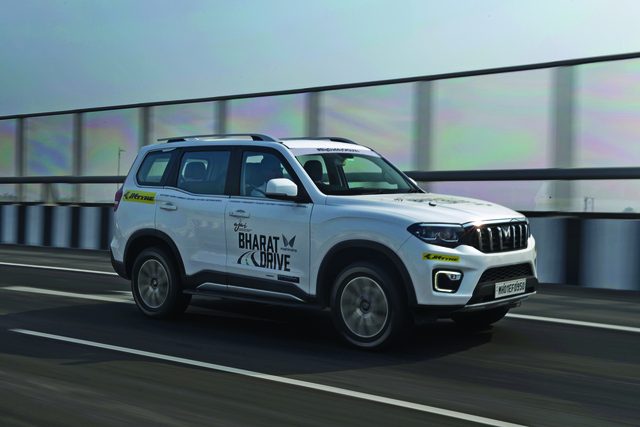
Story: Joshua Varghese
Photography: Govind Gadekar
Infrastructure in India has improved significantly over the years. To explore all of it, one has to cover more than 10,000 kilometres through the length and breadth of the country. That was how the “Bharat Drive” was born. This was AJAI’s first big drive and we were glad that Mahindra Scorpio-N could come on board as a partner.
As mentioned above, AJAI stands for the Automotive Journalists’ Association of India and it currently comprises the 12 publications that are on the jury of the Indian Car of the Year (ICOTY) Award. It is a national platform for all professional automotive journalists in the country. We intend to use this medium to discuss and highlight pertinent issues in the country such as road safety. AJAI will also be instrumental in nurturing young talent and even support the veterans of our industry.
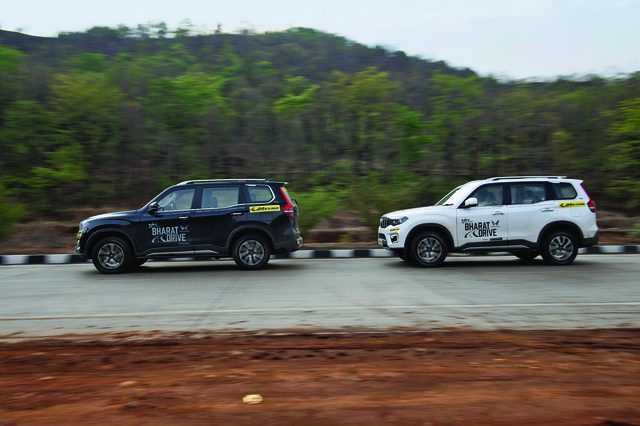
For this drive, we were provided with two top-of-the-line Scorpio-Ns and all we had to do was explore the country. It turned out to be a good choice from the first minute because we were insulated from the humid conditions of Mumbai inside the comfortable cabin of the Scorpio-N. Routes were mapped out and distributed among the members and we secured the drive from Mumbai to Goa.
Mumbai’s growth over the years has been nothing short of phenomenal. As one of the busiest cities in India, it has been witnessing a lot of people movement over the years.
Our first point of interest on this drive was the Bandra-Worli Sea Link. It is officially known as the Rajiv Gandhi Sea Link and it connects the western and southern parts of Mumbai. Its construction began in 2000 and reached completion in 2009. One year later, in 2010, all eight lanes of the Sea Link were opened to the public. The bridge has three distinct parts. The north and south viaducts were products of precast segmental construction while the central part of the bridge is the iconic cable-stayed span.
During rush hours, the travel from Bandra to Worli takes between 20 and 30 minutes (sometimes even longer) but since the bridge came into operation, it has been reduced to less than 10 minutes. In addition to saving time, the drive itself is extremely enjoyable. The bridge runs over the sea for 5.6 km, which places it perfectly for stunning views of the Mumbai skyline and the Arabian Sea.
Impressive as that may sound, this massive bridge is only a part of a larger plan which is taking shape as we speak. During our drive, we also saw the bowstring arch connector that joins the southbound arm of the coastal road and the Sea Link. Once complete, this network is going to considerably shorten the drive from one end of Mumbai to the other.
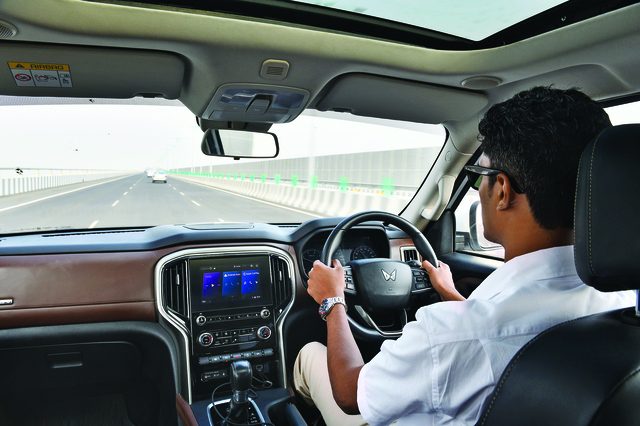
On our way out of the busy metropolis, we came across another architectural achievement, the Mumbai Trans Harbour Link (MTHL), which is the longest sea bridge in India. Of its 21.8-km length, 16.5 km is over the sea while the remaining is over land. It also goes by the name “Atal Bihari Vajpayee Sewri–Nhava Sheva Atal Setu” and it connects Mumbai with its satellite city, Navi Mumbai. In terms of construction, the use of Orthotropic Steel Decks (OSD) is unique to the MTHL. Incidentally, it is the only bridge in India to use that technique.
Furthermore, it may be interesting to note that the choice of OSD was also beneficial to the environment because it does not adversely affect the movement of flamingos in the region. Built at a cost of more than Rs 17,843 crore, the MTHL was completed in just over five years, which is significantly shorter for a structure that is much larger than the Sea Link. That is most definitely progress, is it not?
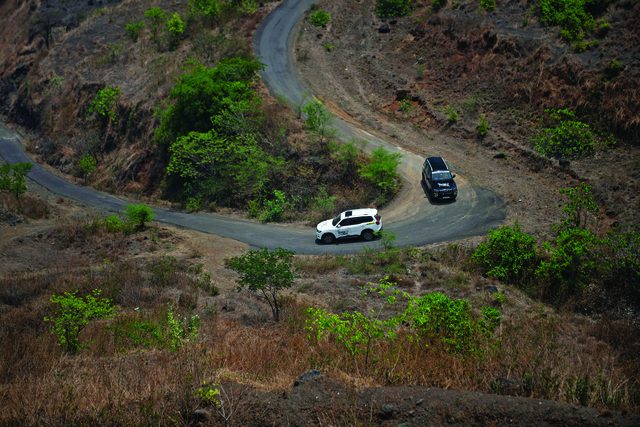
New infrastructure is most useful when it caters to a demand. Today, Mumbai airport is busier than ever, handling huge volumes of domestic, international, and commercial flights. To take some load off it, there is a new international airport under construction in Navi Mumbai. The sheer size of the project meant that we could not get a clear vantage point easily but there was a tough option available in the form of a nearby hill and we put the Scorpio-Ns to good use. Both SUVs scaled the hill with almost no effort and we were able to see the runways. News reports claim that as much as 63 per cent of the project has been completed.
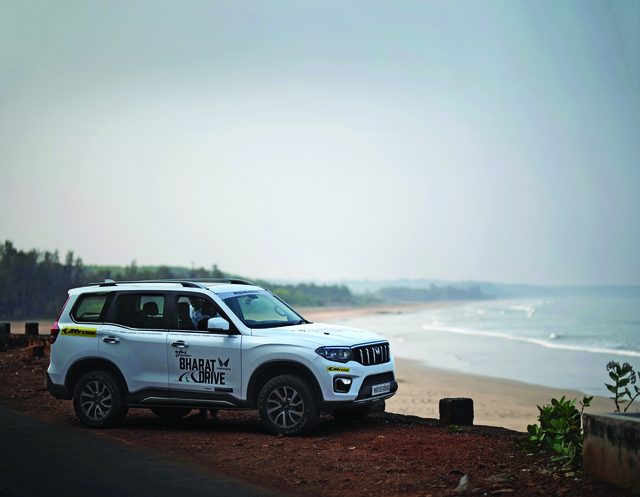
Having covered so much ground, a small break was due and we set our sights on the small, sleepy, seaside town of Ganapatipule in Ratnagiri district. The drive there reminded us once again why the Scorpio-N, big daddy of SUVs, had been an excellent choice. Some may say that other SUVs are just as comfortable as this one was when munching miles on the highway and I would agree but the Scorpio-N begins to shine where most road cars would start facing difficulties.
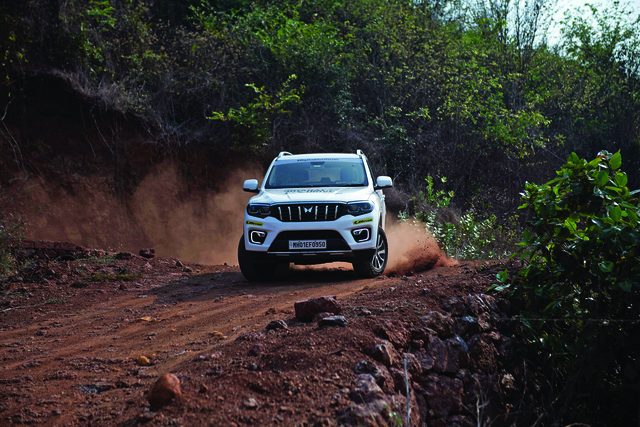
As soon as we left the national highway, we only got good roads in sporadic patches. Most of the time, we found ourselves on roads under construction and sometimes even dirt tracks. Over it all, the Scorpio-Ns continued undeterred without upsetting the comfort of the cocoon we had become used to. The suspension equipped with Frequency Dependent Damping technology ironed out a lot of imperfections and ensured for us an excellent ride quality throughout the journey.
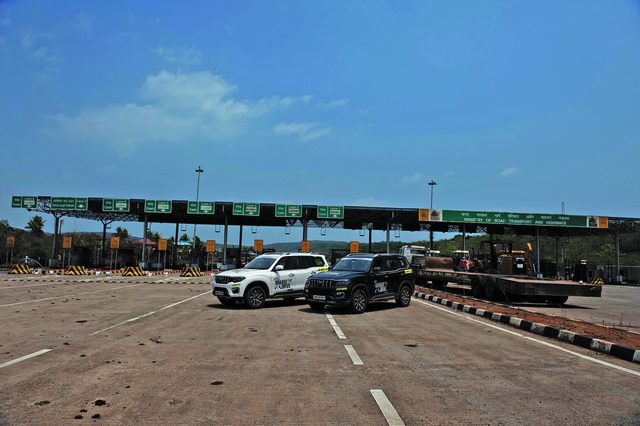
After a good night’s rest, we set off for Goa and inevitably ended up on the National Highway 66 which connects Panvel to Kanyakumari via Goa. For most of the route, the work was still under way. Some of the road was freshly laid while in some places, the widening effort was still going on. Once completed, it is going to be a four-lane highway that is going to significantly reduce the travel time for people driving from Mumbai to Goa. It also offers some amazing views and great options for coastal cuisine. Once past Rajapur, the road is impeccable all the way to Goa.
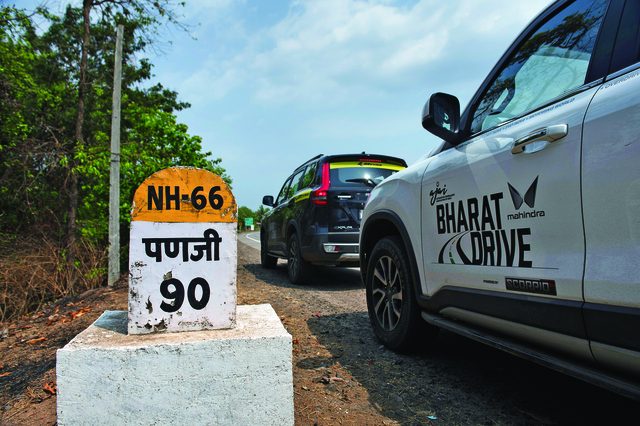
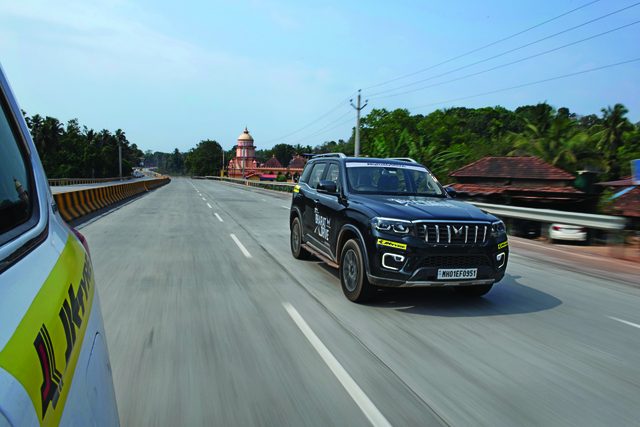
Our final port of call was Goa but before we signed off, we had to visit one of Goa’s latest advancements in architecture, the Atal Setu. It is a 5.1-km-long cable-stayed bridge that connects Porvorim with Panaji. It carries NH 66 over the tidal part of the River Mandovi. Construction began in July 2014 and, by February 2019, it was open for public use. That is less than five years.
What I found unique about this bridge is that it runs right next to the old two-lane bridge that is still operational. One is an ode to the past, while the other is a testimony to modern architecture.
As citizens engrossed in the daily grind, sometimes we may be slightly short-sighted about just how much our country has developed. Since the turn of the 21st century, India’s infrastructure has taken a huge leap forward. Even as you read this, multiple projects are in progress across the country.
At the end of our trip, we must appreciate the durability and versatility of the Scorpio-N too. We had both the top-end petrol and diesel variants at our disposal. Throughout the drive, we had multiple opportunities to experience the advantages of both and one thing was clear. Regardless of which fuel is being combusted, the Scorpio-N is as versatile as they come.
JK Tyre Ranger H/T
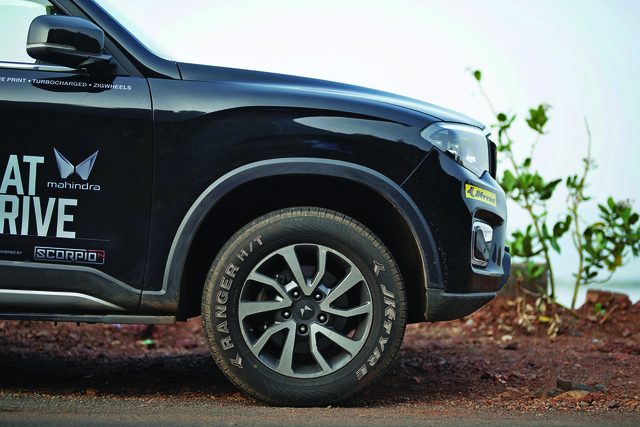
As mentioned earlier, both our Mahindra Scorpio-N Cars were shod with JK Tyre Ranger H/T rubber in 255/60 R18 size. That isn’t available on the website just yet, so this one is an exclusive for you at the moment. During our drive, we encountered newly laid roads, broken roads, off-road sections, and all of the above in the rain too.
The Ranger tyres took on everything with grace. Never once did I feel that grip was at a premium. In addition to their good road-holding capability, the Ranger tyres also impressed with their low level of road noise and good level of comfort. Definitely a must-have for those who enjoy on-off-road adventures.
Also Read: Mahindra Scorpio-N Need To Know


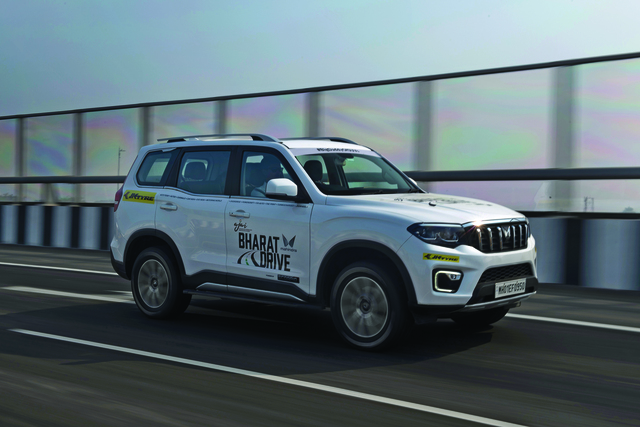





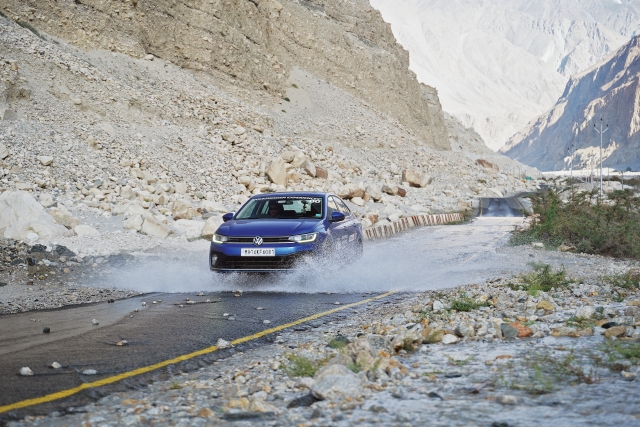

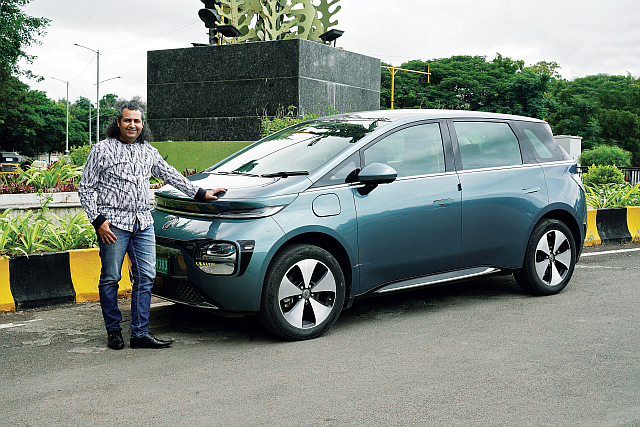
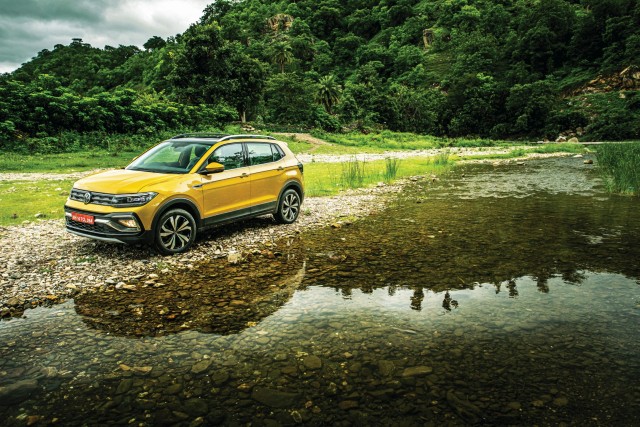
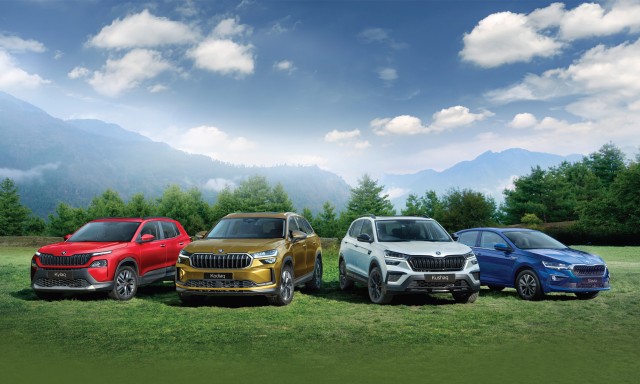

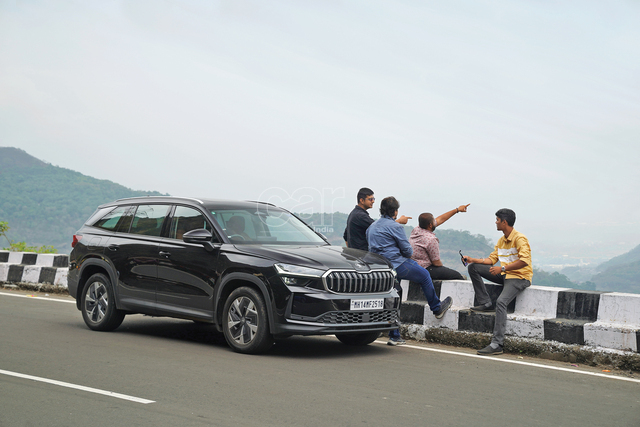



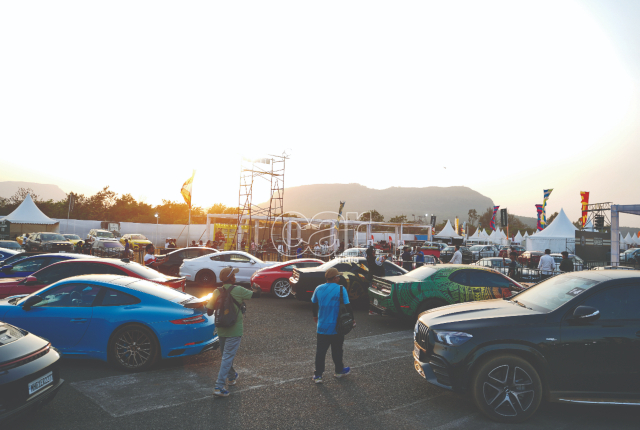



Leave a Reply